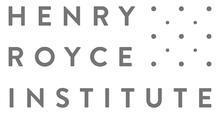Centre for Energy Materials Research - official opening
A new state-of-the-art facility, the Centre for Energy Materials Research (CEMR), was officially launched 9 May. This will provide world-class capabilities to support the development of the next-generation materials urgently required to address the climate crisis.
Spread over five floors of the recently refurbished Rex Richards Building, the CEMR will bring together experimental and computational scientists working on different aspects of energy storage and conversion. With an extensive range of synthesis, characterisation, and analytical equipment, the facility will enable a highly interdisciplinary approach to energy materials research. Central to this is the ability to handle and process materials under an inert atmosphere, since many energy-related materials react with the oxygen and water present in air.
Speaking at the launch event yesterday, Professor Irene Tracey, Vice-Chancellor of the University of Oxford, said: ‘I’m delighted to attend the official opening of this wonderful new centre that is doing ground-breaking research to address some of the pressing challenges in the energy sector. Our future energy needs must be met in ways that consider natural resources and human welfare. And the University’s substantial research strengths cover the many disciplines which are needed to ensure a just and fair energy transition for us in the UK and globally. This capability enables vital collaborations, from access for SMEs to major partnerships with industry and other institutions. I wish my colleagues every success in this vitally important endeavour.’
A particular focus for the CEMR will be energy storage technologies. The University of Oxford has a strong and growing battery research community, and is playing a leading role in several major battery-related projects supported by the Faraday Institution. The CEMR’s new capabilities could lead to significant advances from a broad range of projects working to deliver the electrochemical storage devices of the future. Ultimately, such breakthroughs will help produce batteries with higher energy densities, improved safety, and lower cost. The CEMR will support all aspects of battery research, ranging from the synthesis of new materials under tightly-controlled conditions to advanced characterisation techniques to study structural re-arrangement on the atomic scale.
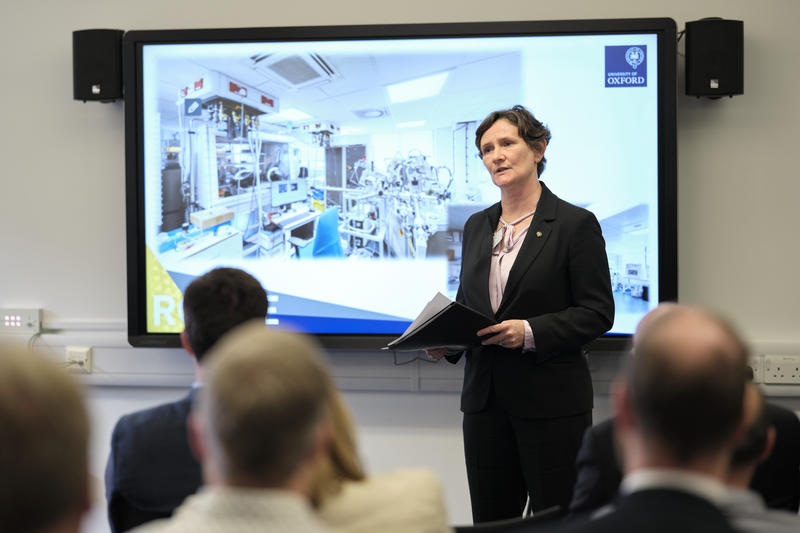
Professor Irene Tracey CBE, FMedSci, Vice-Chancellor of the University of Oxford giving a talk during CEMR opening day, credits: Andrew Bailey.
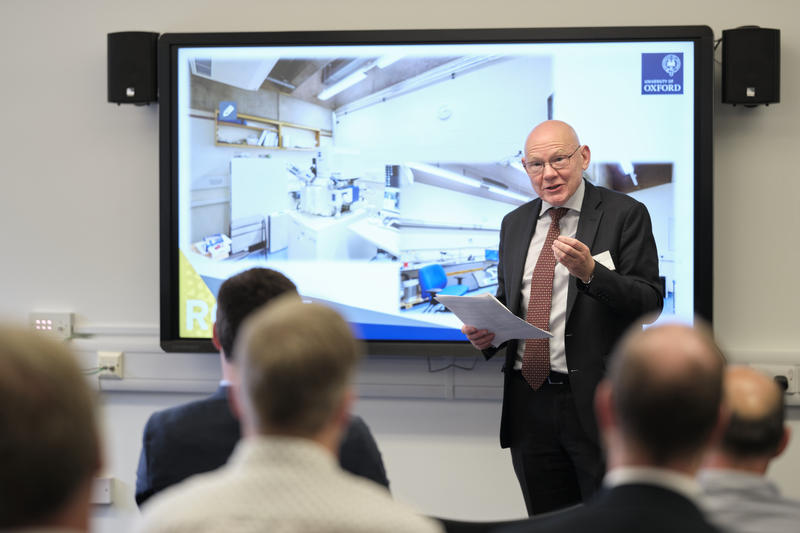
Sir Professor Peter Bruce FRS, Professor of Materials, University of Oxford and Physical Vice-President of the Royal Society giving a talk during CEMR opening day, credits: Andrew Bailey.
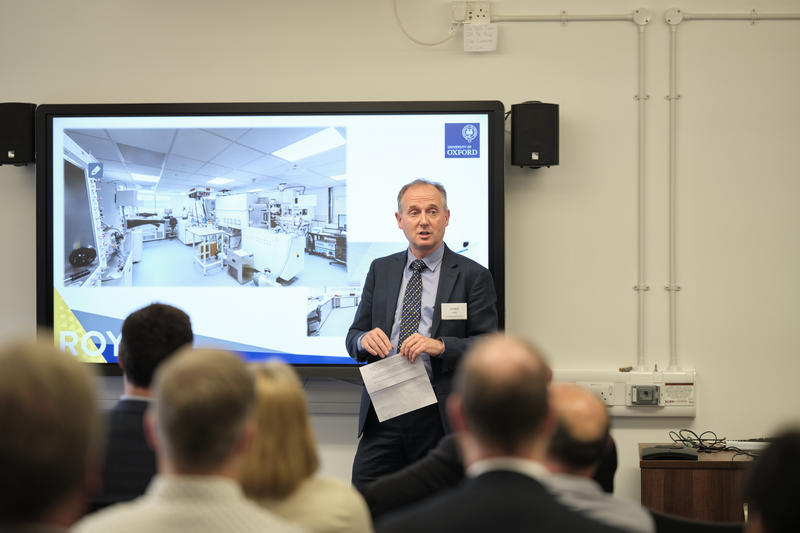
Professor Patrick Grant, Partner director of The Royce Institute Pro-Vice-Chancellor (Research) and Vesuvius Professor of Materials, University of Oxford giving a talk during CEMR opening day, credits: Andrew Bailey.

Professor Dave Knowles, CEO of The Royce Institute, Professor at the University of Bristol giving a talk during CEMR opening day, credits: Andrew Bailey.

Professor Pam Thomas FInstP CPhys, CEO, The Faraday Institution giving a talk during CEMR opening day, credits: Andrew Bailey.

Dr Robert House giving a talk during CEMR opening day, credits: Andrew Bailey.
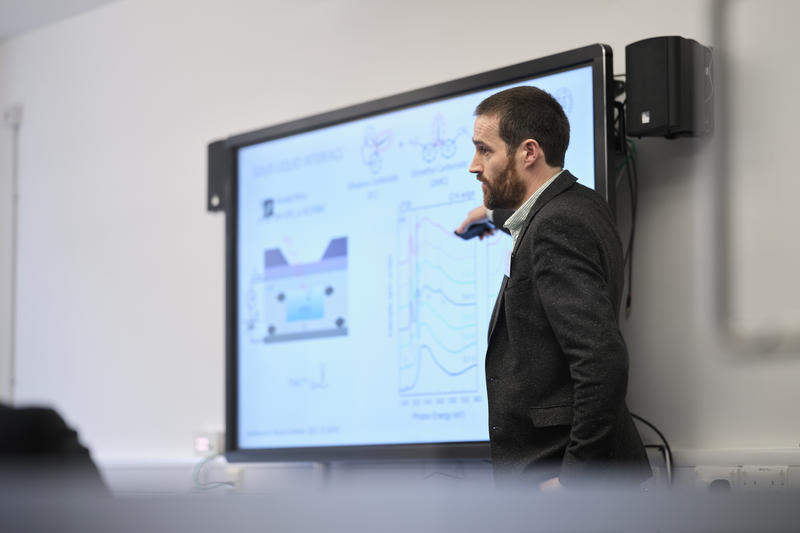
Dr Robert Weatherup giving a talk during CEMR opening day, credits: Andrew Bailey.
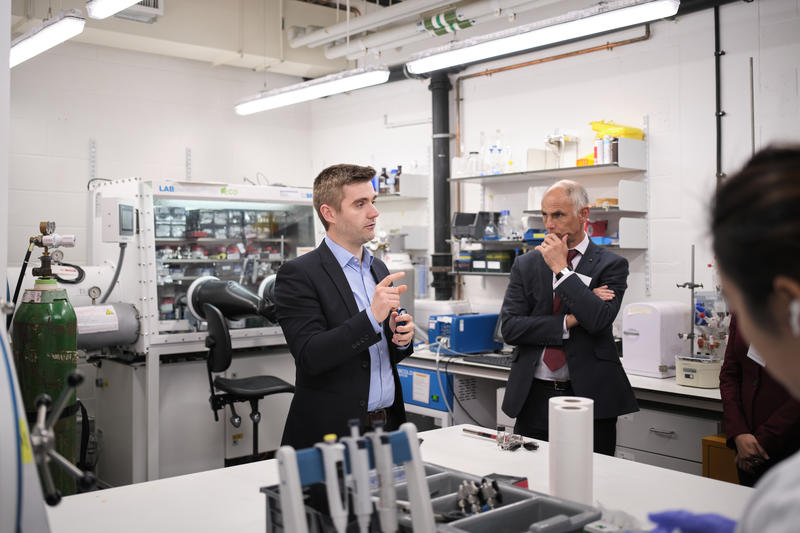
Professor Phil Withers and Dr Robert House at the lab, credits: Andrew Bailey.
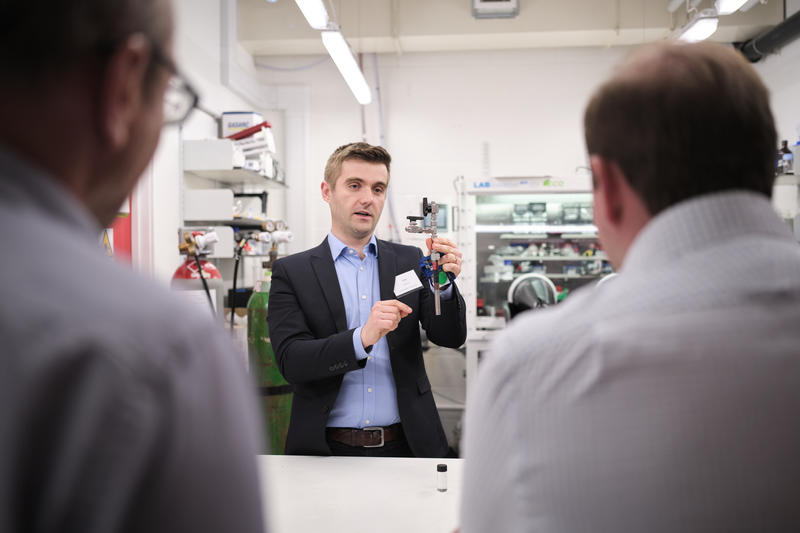
Dr Robert House in CEMR's lab, credits: Andrew Bailey.
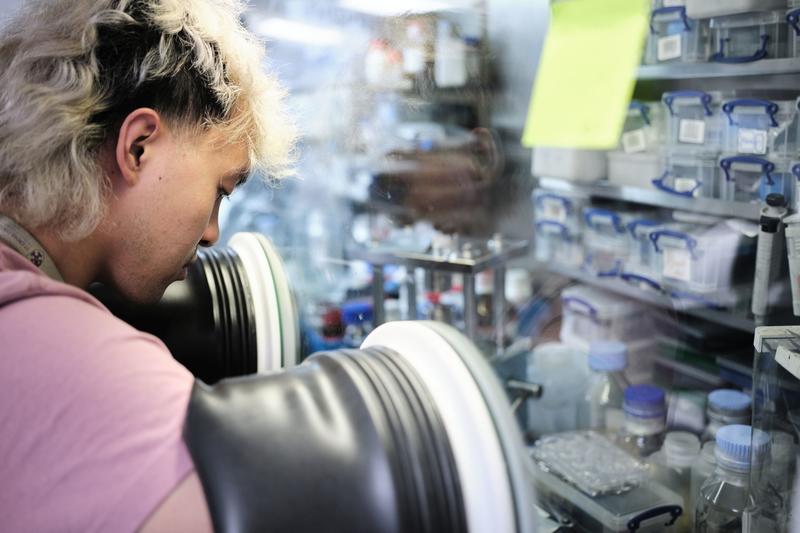
Labs in Rex Richards Building, credits: Andrew Bailey.

